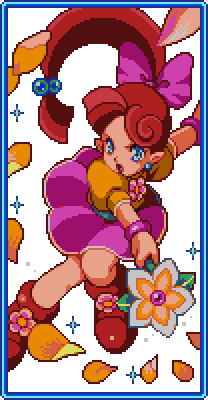



Welcome to Cassette Remarks, a page dedicated to video games, game-related opinion pieces, and other miscellaneous video game-adjacent junk. The title for this page is taken from the "Cassette Remarks" sticker commonly found on bootleg Famicom games, usually warning the player not to do things like smash the cartridge with a hammer or pour water on it.
This entire page is under construction and subject to change. Sorry. Current to do: Chibi-Robo images, finish Gimmick article, get Gimmick images

article coming soon

I found out about Chibi-Robo one day as a kid when I was standing in the checkout line at Toys "R" Us, staring at a Nintendo Power issue that had the titular robot (alongside Telly) on the cover, with the text "GONZO GAMING!" in big print right beside them. I can't remember what I actually bought that night, but I do remember that magazine, and I remember finding myself really drawn to the robot on the cover. I was 9 years old in 2005 and things were happening in my life. My parents were splitting up, arguments breaking out left and right ad infinem over things like my dad's skewed priorities and disinterest in... well... being a dad. Still living with his brothers on their relatively rural property, all his time and attention was being dumped into amassing the toy collection of his dreams, buying up pack after pack of action figures to hoarde for the coming decades like some sorta plastic-loving dragon. My mom had other ideas- she wanted a house, for starters. I lived with her and my sister in the same home as my two uncles and my pap, and it wasn't exactly a big house to begin with. She started cheating on my dad behind his back, and began dating the guy who would later become my stepdad- and for a short while my mom, my sister and I all moved in with him. But after he proved to be unstable and violent (a warning of things to come down the line), we moved back into my pap's (unfortunately temporarily). It was February 2006 when I saw Chibi-Robo in a Target ad and asked my mom if she could get it for me, hoping to take my mind off the stress that was quickly getting to my tiny kid brain. A game to distract me from the turmoil in the relationship between my mom and dad over his stupid obsession with toys that meant more than anything else in his life. Chibi-Robo was not the game to do that, and I think I'm better for it.
Chibi-Robo! was released in 2005 for the Nintendo GameCube (a specific release date unfortunately doesn't seem easy to come by). Published by Nintendo, it was developed by Skip Ltd., a studio formed from former devs of Love-de-Lic, the developer responsible for far-out, inventive games like Moon: Remix RPG Adventure, UFO: A Day in the Life and L.O.L: Lack of Love. It stars the titular Chibi-Robo, the brand-new robotic companion of the Sanderson family, and one of many identical models of miniature housecleaning robots. Chibi is accompanied by his talkative (if not slightly neurotic) aide/manager, Telly Vision, a floating TV-like robot who instructs and informs the player of certain things as the game goes on, as well as providing an element of comic relief at times. The game is relatively straightforward and simple at the beginning- Chibi-Robo must clean the house to receive and collect Happy Points. You accomplish this task by picking up garbage, scrubbing floors, and squirting away caked-on crud. As you run around the household (which is gargantuan to your tiny robot body), you can interact with the environment, the objects within it, and the different characters scattered about. The real magic, however, starts at night, when all the toys come to life and become characters you can speak to, play with, and perform various tasks for. In addition, a wide variety of unlockable costumes and tools change the way you interact with the world as the game proceeds. The ghost costume lets you scare other characters, and the hospital bandages let you fake your own death (sometimes to your own detriment- if you don't get back up after playing dead for a long enough period of time, Telly will believe you're gone for good and will take you back to your home base, the Chibi-House, where you'll awaken to find him crying over your "corpse").
Chibi-Robo, on a mechanical level, is a very laidback experience. The only two points of concern in the game are your battery level and the time. Your battery level decreases constantly as you perform any actions or inaction, and must be recharged periodically from power outlets around the house. The time affects the day/night cycle, and when it runs out the game pauses momentarily as you're warped away back to the Chibi-House to start anew. This adds an element of time management to the game- if you want to accomplish a certain task that's only available during the day, you have to make sure you prioritize that task and get it done before it's too late, or else you'll be stuck waiting until the sun is up again.
It might surprise you to hear that Chibi-Robo, a game about cleaning, was not a commercial success. Despite all its personality and charm, it failed to win over much of an audience in the West, which is a shame- since there's a whole friggin' plot to this game beyond just scrubbing floors with a toothbrush. This is where the tangent I went off on in the first paragraph comes into play- y'see, Chibi-Robo's plot revolves around the Sanderson family and their rocky relationship struggles. Mrs. Sanderson, the mother of the household, is in a bit of a spat with Mr. Sanderson, the dad, over his excessive spending on... well... toys. Collectibles, doodads, gizmos. Things of lesser importance than his own family, and yet he's unfortunately taken to prioritizing these instead. Jenny, their daughter, wears a giant frog hat at all times and speaks largely in ribbit sounds ("gero gero" noises technically but still) but underneath this amphibian-loving exterior she's the unfortunate victim to a crumbling family, like any kid going through the pain of their parents' divorce. Chibi himself, originally purchased by Mr. Sanderson as a gift to Jenny, is a thinly-veiled and poorly-disguised self-serving purchase that has little to do with his daughter or her interests- although thankfully, if not ironically, it's up to the player as Chibi-Robo to save the Sandersons and repair their broken home before it gets out of hand.
The financial struggles of the Sandersons span far and wide, with the mother often lamenting to Chibi over the piled-up bills. Additional exposition is given over time that Chibi himself isn't even the first go-around the family has had with a mechanical maid- predating Jenny's birth, the Sandersons had an autonomous in-home helper in the form of Giga-Robo, a large and clunky robot assistant from the same manufacturer as Chibi. An older model with a power problem, Giga-Robo was retired after his electricity demands proved too taxing on the Sandersons' finances- a fate looming over Chibi as well.
Chibi-Robo is a fantastic and often underrated game and my favorite GameCube game overall. Beyond its relaxed janitorial surface-level gameplay it's jam packed with things to do and discover, characters to talk to, subplots to experience, and lots of other generally wacky and creative stuff you just don't really expect until it's there and you're doing it. The plot hit me harder than intended, I'm sure, at a time in my life when it was closer to home than I really expected- and unlike the Sandersons I didn't have a tiny robot to fix my problems for me, but that's fine and my life went on, and for as much bad had stemmed from my parents splitting up far more good came from it in the long run. While the situation was at one of its lowest points, and while I was still working out the emotions and tension of everything in my head, Chibi-Robo was there to help me process those feelings and distract me, even if just a little, at a time when I needed it most.
Spread the happiness.

Released in 1992 for the aging Nintendo Famicom, Sunsoft's Gimmick! is a technical masterpiece that feels like something out of a dream. Famously known for its incredible soundtrack (powered by the Sunsoft 5B expansion audio chip), the game features vivid Kirby-esque visuals and unique, abstract environments sprinkled with secrets. Our hero, Yumetaro, is a tiny green creature with a single horn that can generate a magic star above his head that he can then throw and bounce around all over the place, using it both as a platform and a weapon to attack his enemies. The plot revolves around our squat green friend being mistaken for a plush toy and given as a gift to a young girl on her birthday. Later that night her other toys rebel in jealousy over Yumetaro's addition to the household, taking the girl with them into a mysterious dream world where she's held captive by an unknown big boss. Yumetaro jumps inside the closing portal to this other world and sets out to rescue her.
An under-discussed element of Gimmick's gameplay is just how smart everything is. Enemies exhibit AI that's surprisingly complex- the simple black blob mooks in stage 1 will chase and jump at you to attack, but if you seat yourself on a block they can't reach and mockingly allow them to repeat this ineffective routine of hopping around like idiots directly below you they'll eventually sprout propellers from their heads and take to the skies to give chase. Some enemies don't even attack you at all- just standing there as if deep in thought, analyzing your movements, seemingly motionless until you either attack or draw near and they suddenly respond. The true final boss of the game is a great example of this surprising intelligence, beginning his first phase of attack like a pastiche of the Dracula fight from Castlevania before he dons a sword and begins jumping around acrobatically. It gives an element of life unexpected from an NES game, and in turn adds a layer of mystique.
Despite brandishing two different endings Gimmick is ultimately a short game at only 7 stages (6 if you receive the bad ending) but its grueling difficulty (especially in the later worlds) and its mind-numbingly challenging secret areas requiring complete and utter technical mastery of Yumetaro's star ability definitely leave a lasting impression on your psyche. Getting a Game Over at any time in the game lets you continue where you left off but with the loss of all the secret items you've collected- effectively locking you into the bad ending, since collecting all the items is the only way to access the true final stage.

I almost titled this section "Painel de Pon" until I realized "painel" sounds too much like "painal", a slang term for rough nonconsensual sodomy, which is also exactly how it feels to live in a world where Nintendo has stripped one of their most colorful and visually creative IPs before it ever had a chance to even get off the ground. Nintendo's treatment of Panel de Pon is like taking a young bird ready to set flight for the first time and clipping its wings. It's actually a very fitting parallel to what capitalism did to the internet- Nintendo took something fresh, vibrant, and unique and proceeded to power wash away any semblance of character on the sole basis of maximizing profit.
In 1995 Intelligent Systems released Panel de Pon for the Super Famicom in Japan- an inventive new puzzle game, Panel de Pon is also steeped in a rich palette of bright colors cast over beautiful artwork and set to a charming and memorable soundtrack. What it didn't have, however, was profitability (according to Nintendo of America, at least). Panel de Pon stars Lip, a fairy with a flower motif in a pastel fantasy world of other fairies. Looking something like a cross between a mahoshojo anime and Rainbow Brite, Panel de Pon is a very outwardly """feminine""" game in appearance to anyone who dwells on trivial shit like whether or not the color pink means they're allowed to enjoy it or not. Therein the problem lies.
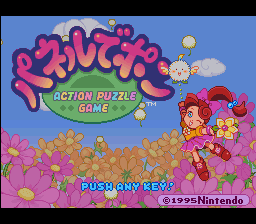
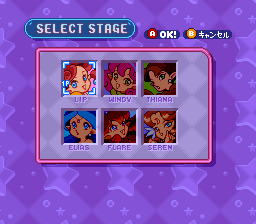
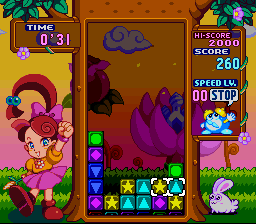
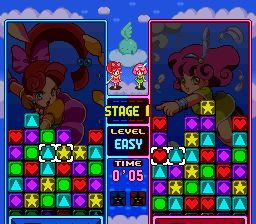
Panel de Pon would find its way to American shores a little under a year later in the same month I was born, August 1996, but in the time since its release in Japan it was thoroughly stripped of Lip and company and completely rethemed and renamed- Panel de Pon was no longer an original IP. In fact, Panel de Pon wasn't Panel de Pon at all anymore. It was Tetris Attack, and it was all about Yoshi.
With a fresh coat of Yoshi's Island paint, Tetris Attack (an incredibly unfitting title given the fact that PdP bears literally no similarities at all whatsoever with Tetris other than "blocks fall from the top of the screen", a mechanic synonymous with most puzzle games at the time in some form or another) is the softest of the reskins. Most of the music is intact, and the sprite art is still gorgeous. It's just that it's... well, it's Yoshi now. And for as much as I love Yoshi (especially this era of Yoshi), I like Lip and the fairy cast a heck of a lot more for being something I haven't seen before. Know what I mean? Nintendo didn't, and I'm sure they were right, because I already know I'm a unique case with things like these. I guarantee you Panel de Pon would've been completely eradicated by every Western gaming publication in existence for its generally girly appearance, and it probably would've found a fast home lining bargain bins in Toys "R" Us stores everywhere in next to no time. So from a business perspective, yes, this made sense- it's just that I also think it fucking sucks.
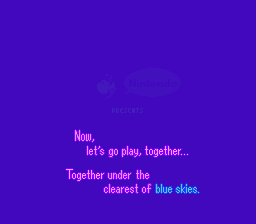
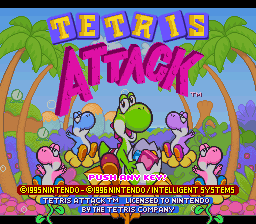
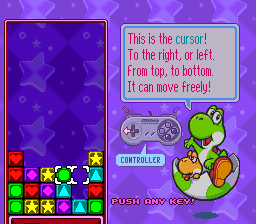
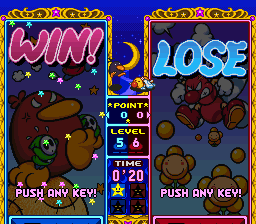
The problem with Nintendo's retheming of Panel de Pon is that Tetris Attack wasn't where it ended. Other similar rethemings can be forgiven- Dr. Robotnik's Mean Bean Machine on the Sega Genesis is an amusing reskin of Puyo Puyo that's typically regarded fondly and humorously, even today, because Sega only did it once and we also live in a world where Puyo Puyo exists in the West now. Panel de Pon, on the other hand, was effectively beaten to death over and over again in what was essentially the closest Nintendo ever got to a legitimate bait-and-switch scam. After its Yoshi retheme as Tetris Attack, it was reskinned a few years later again as Pokemon Puzzle League and Pokemon Puzzle Challenge- games that were, once again, just fucking Panel de Pon, only this time themed after Pokemon, which, of course, was all the rage in the late 90s/early 2000s. Panel de Pon had become a sort of "filler series" that Nintendo was rapidly adjusting in the west for each release to suit whatever was selling the most at the time- the Tetris name and Yoshi visuals made the most fiscal sense in the mid 90s, but Pokemania had given Nintendo a completely new cash cow to milk, and so Pokemon it was.
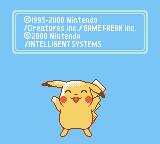
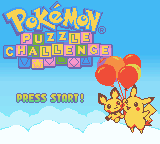
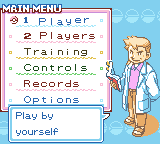
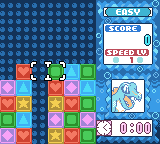
One of the most painful things about Pokemon Puzzle Challenge is that it's an intense romhack and retheme of what was once Panel de Pon GB, a Game Boy port of the original fairy-themed Panel de Pon. Just like Tetris Attack, it wasn't built from the ground up as a dedicated game about whatever theme NoA slapped onto it- it began its life as Panel de Pon, and it was cut down once again before taking off. The same could probably be said about Pokemon Puzzle League, since it's known that a Nintendo 64 prototype exists of Panel de Pon. I'm sure that was probably used as the basis for that game just like the other two versions preceding it.
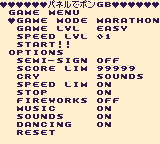
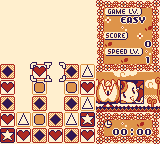
Despite all of the above something crazy went down in 2003. Nintendo released Nintendo Puzzle Collection for the GameCube, and for the first time in almost ten years, Panel de Pon was back as a game about fairies. Not only that, but it was a sequel, complete with new modes, brand new visuals, and tons of additional new stunning artwork that blows all the Pokemon shit clear outta the water. The caveat? Nintendo Puzzle Collection was only released in Japan, and the planned English localization announced at E3 that year was canceled. No fairies for us.
The GBA saw the release of Dr. Mario & Puzzle League in 2005, a two-game combo cartridge (not unlike Tetris & Dr. Mario on SNES) that dropped the Pokemon moniker and theming and brought """pure""", themeless "Puzzle League" to the world for the first time. Pure Puzzle League. As pure as a fucking unsalted cracker, or a glass of tap water- although the latter definitely isn't that pure, the comparison still stands. Both tap water and Puzzle League are bad for you.
2007 introduced Planet Puzzle League on DS to the world, and despite the above paragraph it's actually a lot more tolerable this time around. Effort was actually put into this game, featuring some unique high-tech thematics, cool and breezy music (some of which sounds straight out of the slice of life anime airing at the time), and, even cooler, a stage themed after Lip! Well, only in the Japanese version, but those bastards at Nintendo of America thankfully failed to neutralize her entirely- using an Action Replay code on the US version of Planet Puzzle League will let you play Lip's stage in all its bright, cheery glory.
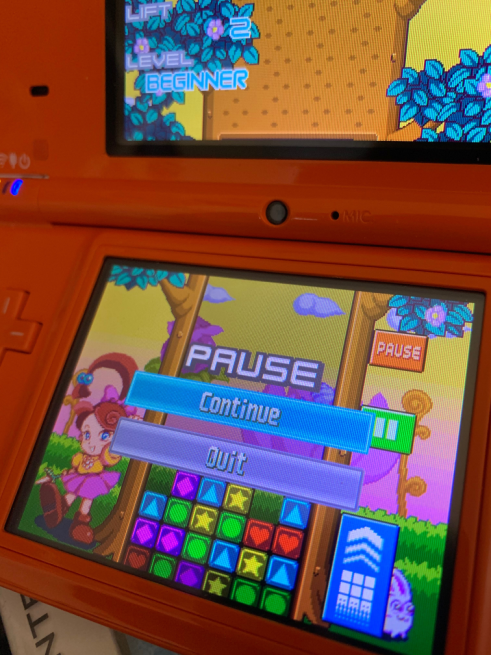
Animal Crossing: New Leaf on 3DS received a Puzzle League minigame in 2016 as part of an update but honestly I couldn't care less, so I'm not gonna bother writing about it! Yaaay!

Test
Test
Test
test (Test but in lowercase this time)
lemme hear ya holla "wapo"....
Test
Test
Test
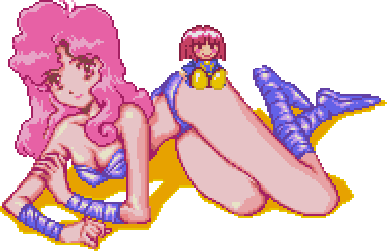

You've reached the bottom of the page. Click here to return Home, or here to return to the Nexus.
